How Instagram Niche Pages Helped Make $30,000
When most people think about marketing on Instagram, they think about ads or influencers.
But not Kamron and Varun. The high school friends and business partners leveraged Instagram in a lesser-known, different way to run their business to success: niche pages.
The teenage duo joins us in this episode of Start Yours to tell us how they made $30,000 of revenue in three months using Instagram niche pages.
Despite their young age (year 11 and 12 of high school), they have a bunch of entrepreneurial experience under their belts and dropped plenty of knowledge bombs during our chat.
The fact that they did it all while juggling school makes it all the more impressive.
If you're looking for tips on how to buy, build, and use Instagram niche pages to grow your ecommerce business, then this episode for you. It's also full of entrepreneurial inspiration as Kamron and Varun also talk about their motivations and mistakes made along the way.
We hope you'll enjoy this episode and that you'll consider subscribing to our podcast.
Prefer a summary of our chat? Here's a seven-point TL;DR version:
- Kamron and Varun were driven to make their own money by the financial independence and freedom that most young teenagers don't.
- When starting with Instagram niche pages, make sure it has to do with the area or niche you're trying to sell your product in.
- The key to building really good engagement is consistency.
- When picking a product, it helps if it's something you can relate to or are passionate about.
- In the first few weeks after launching their store, Kamron and Varun were getting traffic and sales only from their niche pages and relied on Facebook Pixel to get data.
- Kamron and Varun made $2500 in their first month, $12000 in their second month, and $15000 in the first two weeks of the third month.
- When deciding on a price point, don't forget to give yourself room to profit and have enough to play around with ads.
Start Yours is a podcast about ecommerce, dropshipping, and all things launching a business.
Join us as we meet entrepreneurs who have gone through the triumphs and headaches of running an online store, and learn how they managed to survive and thrive.

Don’t wait for someone else to do it. Hire yourself and start calling the shots.
Get Started FreeHaving a Hustler Mentality
Aleisha: I wanted to start by asking you how you both met because you are both, I believe, at school, you are studying, and how you found each other and decided, "Hey, let's start a business together."
Kamron: Yeah, Varun, you can hop on as well if I miss anything. But we actually go pretty far back as opposed to just meeting at school. We're family friends for a while now. Let's see, when I think back, I'd say for about six or seven years we've been family friends since Varun moved to the area here that I live in, where we live in, in Bellevue.
So yeah, our parents are... Actually, I think it was our younger sisters, they went to kindergarten together, and so from there our families met and then eventually just through families, we started spending time together and...
Yeah, so back in about middle school, I would say. I'm a grade ahead, Varun is a grade below me, but we started hanging out back when I was in seventh grade, I think. He was in sixth. Yeah, did I miss anything, Varun?
Varun: No, that was actually pretty accurate. And you asked about starting the business, right?
Aleisha: Yeah.
Varun: So we started the business... I actually introduced the idea to Kamron at this Halloween party, and I told him about it and we were like, "Oh, let's just start this business." I showed him this item... Actually, it wasn't the AirPod cases, it was something else. But then once that business actually failed, we started this AirPod business and it actually took off.
Aleisha: What interests me, when I speak to lots of people on this show, is the idea of where this entrepreneurship, where this drive comes from because you could talk to a bunch of kids, and I know that I always had that sort of business, that little itch to make money and to be... I was always scheming, and that sounds dodgy, but I was always sort of thinking about... I didn't wanna do nine-to-fives, and I really resented going and doing my waitressing job 'cause I just wanted to sell something or run a business when I was in high school.
But what was it that started the conversation between both of you where you realized, "Oh, we're both into this. This is something we wanna pursue together."
Kamron: I would say from a younger age, I've definitely... And I'd say this applies to both of us – this hustler mentality. Just the idea of being able to have your own money and spend it on whatever you want, especially when you're younger.
When you're 12 and 13 and 14, being able to go out with your friends and get food or buy clothes and not having to ask your parents.
I just thought that the idea of that kind of level of independence has always been super compelling to me.
And so, like I said, from when we were younger, for me, it was always... I was into clothes a lot, we were both into fashion and the sneaker game a little bit and so... Getting the shoes and then reselling them for when they all sold out. So we were in that for a little bit.
But I think that both of our skill sets sort of came together when Varun, like he said, when he approached me with the idea. Because the hustle that I had currently... That I was working on at the time had to do with Instagram niche pages. So that was my main thing at the time. I was growing Instagram niche pages with a decently sized network using the bigger pages to grow the smaller ones and building a community in terms of exchanging shout-outs with other pages and buying promotions and that kind of stuff.
So when he came to me with the idea, in my head, it's, "Oh, well, maybe I can use it in my accounts as one of the... We can use it as a platform, and this could really... We could give ourselves an advantage in the beginning."
Aleisha: That is so clever. Let's go back. If people don't know what Instagram niche pages are, can you just touch on that a little bit more and explain what that actually means?
Unpacking What Instagram Niche Pages Are
Kamron: Yeah, sure. So Instagram niche pages basically are... I would just say if anyone uses Instagram, whether you know it or not, you definitely follow a few niche pages. It's basically just pages targeted around, as it says in the name, certain niches.
But this can vary from anything. So you can go all the way from meme pages to travel pages to food pages. These are all Instagram pages that are focused around a certain niche. And Instagram, as we all know, it's massive, it’s one of the most used social media sites on the Internet.
And so the idea of growing niche pages is that you can use the community of other people, give each other shout-outs, help build a following, etc. And there's a bunch of strategies that go into it, but basically using niche pages, you can... The main revenue source there, besides buying them, growing them, and selling them, is selling ad space on the niche pages.
And so if you are in a particular niche, companies and ecommerce brands, and whether it's in-person or ecommerce brands, they're always coming to you to buy ad space, depending on how high or low your engagement is.
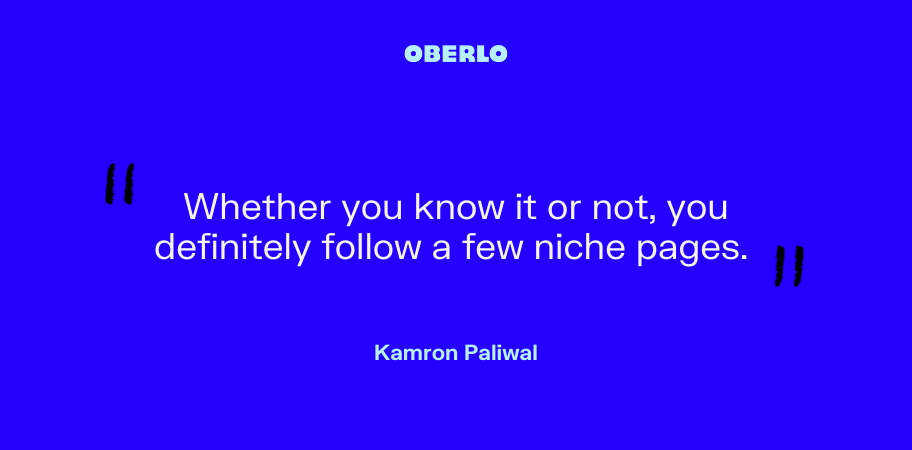
Aleisha: Right. So if I was... Let's just pick... I always pick pot plants, I don't know what it is about pot plants, that I am just into pot plants. So let's just say we're into home gardening or indoor gardens, that's pretty niche, isn't it?
Like you don't have any... You live in an apartment, and you decide to build a niche page all about, you know, sexy indoor gardens. So it could be photos of great pot plants or great spaces, and then you would then build the niche page to then sell to plant care or to people that are selling pot plant holders or macramé holders or something like that?
Kamron: Yeah, exactly. So, yeah, so... And you can almost visualize a page like that where the whole theme is green or flowers or something. And yeah, a lot of these posts really end up blowing up on the explore page because of their aesthetics.
And when you think about it, when someone clicks on the account, when they like a post that they find maybe in their explore page... So let's say for your example, for a garden, when they go onto the explore page and they click the account, they... That page is posting all the similar content to the one photo that they liked.
So you can get an idea as to how it's a pretty smooth process in terms of growth.
Because if you get someone that likes one of your posts, there's a really high chance that they're gonna wanna follow you and see more of your content.
Aleisha: So clever. So you were building these niche pages. How many did you have at one time going?
Kamron: So I'd say the most we were running, I'd say four. And it's not like four that were posting every day. It was like three of them posting on a daily basis as much as we could, and then this fourth one that I had, it was kind of just... We had just purchased it recently, we got a really good offer on this page with about 45,000 followers.
The owner was really just trying to get rid of it, and so, me and my friend who was working on these pages at the time, we decided to take some of the capital that we earned from the ad revenue and buy this niche page. We weren't really posting on it much. But yeah, we just had a page sitting there, and I really thought, might as well put this to use.
Varun: I was just gonna add on to Kamron and say that with that niche page that Kamron had that was just sitting there, we actually took that page and started posting the AirPod cases for a little bit.
And we deviated from that niche page. I don't know what the niche was before, but we deviated from that and we changed it to this AirPod case niche, like this hype niche.
And in the beginning, it had very low engagement, but then after a couple of months, our engagement sky-rocketed. It was very exponential.
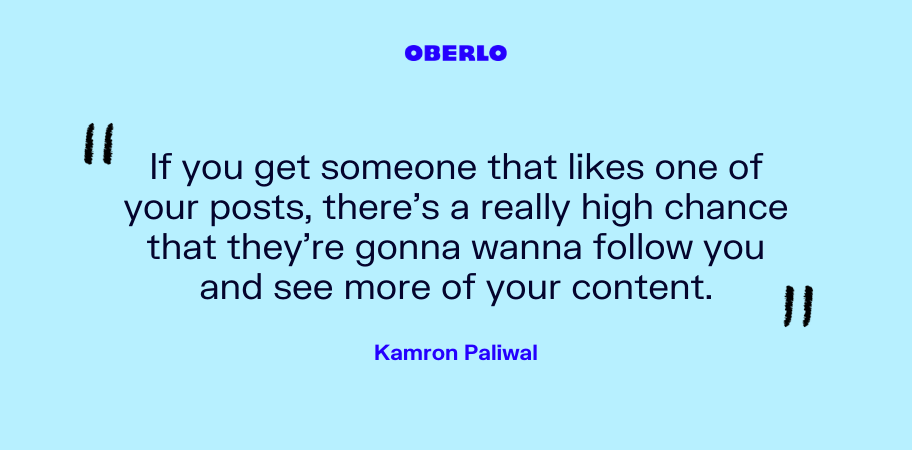
Acquiring and Building an Instagram Niche Page
Aleisha: This is so interesting to me, because it's such a unique marketing avenue for people, especially in ecomm and dropshipping if you are wanting to get a jump start, I suppose, if they are looking to purchase a niche page.
And I know this wasn't our angle that we were going to talk about, but now, I love that this happens when we have chats with merchants because they always reveal these interesting specific ways that they've made things work, so I hope you guys don't mind going into this a little bit, but I think it's so interesting.
But if you are... Okay, so let's go back to pot plants. So I find a niche page and it's for sale, and I'm interested as to where we actually purchase something like this. The questions, two questions, then, where do we find niche pages if we wanna buy them, or perhaps maybe the first step is then asking for an ad? If you're running the pot plant ecomm store, you wanna then advertise that.
And then also, how do you make sure... Like you were saying, Varun, to advertise the AirPods on the page, you wanna make sure that you've got the right people following that page to then make purchases 'cause it's silly advertising to people that have no interest in the product that you are putting out there, I suppose.
Kamron: Yeah, you actually bring up a great point. So, Varun, I'll just take on the first part, if you wanna take on the second part. I would actually say one of the things that was definitely a learning experience for us was...
So taking a step back, the page that we had that we decided to convert, previously, I believe when we had bought it from the owner, or the owner that had it before us, it was inactive for a while, but basically, I'm pretty sure it was either a meme or a party page, one of those two, where they post about nightlife, that kind of stuff. And so as you can probably tell, it has nothing really to do with the area that we were trying to sell in.
And if I take a step back, like Varun was mentioning earlier, our AirPod cases wasn't even the first idea that we had. Initially, we actually... The first idea that we had was... ASMR was really popping off at the time, it still is, and we wanted to sell these squishy toys. Varun really came up with this idea, and I thought they were really cool because we had a bunch of cool photos for them and we had great margins, basically, for the suppliers that we found.
And so we were like, “Oh, let's sell these, we'll give it a go.” And so you can see... If you think about it, going from a party page to trying to sell people squishy toys, it doesn't necessarily... What should I say? It just wouldn't necessarily be the best way to go about it.
So to answer your question, I would say when starting off, for these niche pages, definitely do something that has to do with the area or the niche that you're trying to sell a product in.
And to go more in detail, you talked about how you actually purchase these. So it's definitely much easier when you have a community of people, like you're in different group chats and you have a larger network of other owners of niche pages because there are always people trying to sell theirs.
But for someone who's brand new, I would just say, it takes consistency, you really gotta reach out to 20, 30, 40 of these pages.
And like you said, that was a great thing that you brought up, which is to ask if they're willing to do promos. You can usually tell by their feed if they do promos or not. And then you can literally just DM them and ask, "Hey, are you interested in selling this page?"
And a lot of them, they'll usually give you a super high-ball offer in the beginning. But if you're really interested and they think you're serious, and you have the capital and wanna pay the price, some of them will really take up your offer because like I said, a lot of these people are running multiple pages.
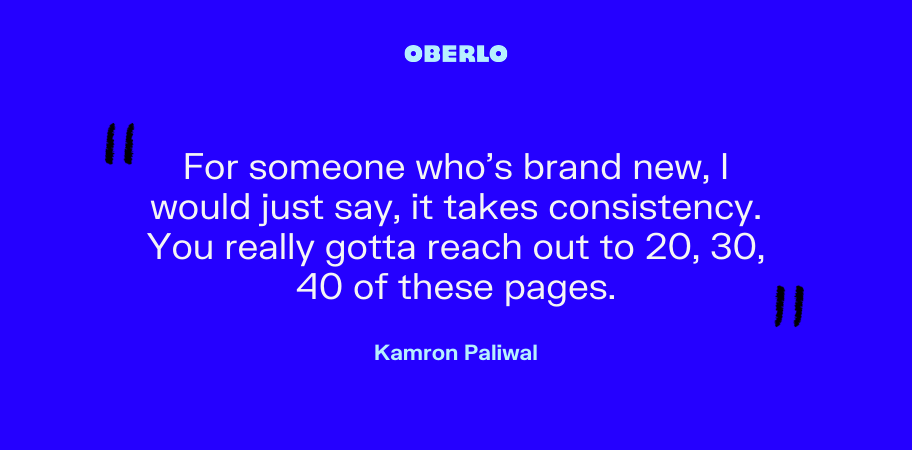
Marketing on an Instagram Niche Page
Aleisha: Tell me a little bit how you started actually marketing the AirPods on... 'Cause that was the one that really kicked it off for you guys. What sort of images and content were you putting out there to make it work?
Varun: So yeah, in the beginning, I had been using... So we got some products in from the supplier, and I started to use Photoshop, actually, from school... I actually learned this in school, Photoshop, and I learned how to...
Aleisha: Good.
Varun: Yeah, it's actually kind of nice. So I learned how to Photoshop the AirPod cases in people's hands because we didn't have the product at the time. But then we started shipping the product to our house and then getting actual product photos.
And once we did the product photos in real life, we got really good engagement.
And I think the main point to building really good engagement is consistency 'cause if you don't be consistent, it's literally never gonna work. So you have to be consistent in whatever you do. And that's how we actually grew the page.
And also, with the high following, it's actually a lot of social proof. So if someone goes on our page and they see like 20 followers and they see this product, they're less likely to buy it, let's say, to an account with like 50,000 followers. They'll be like, "Oh, this has a lot of social proof, and I would rather buy from a 50,000-follower page than a 50-follower page."
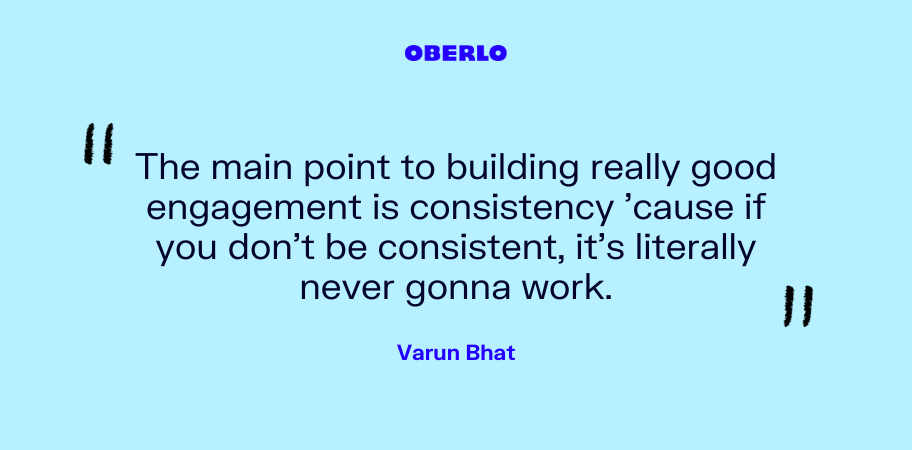
Aleisha: It's so interesting looking at, especially dropshippers who are then just pulling images straight from AliExpress or wherever they're finding their suppliers, compared to what you're saying, is just doing a bit of Photoshopping and buying some stock images and then putting your product, whatever it is, into the image.
It really does increase... I suppose it just makes it look more legit if you aren't seeing the same image over and over again and you can stand out with something. And it's not that complicated, I suppose, with Photoshop, as you said, you learned it at school, you did it at school, good on you. I've self-taught Photoshop, and I don't think I'm great at it, but I can certainly cut an image out and use a bit of masking to make it look a bit prettier.
Have you ever outsourced any of that stuff, or have you done it all yourselves?
Varun: Me and Kamron both did all this ourselves, we never outsourced anything. So, yeah, we actually didn't have to pay anyone to do it. I think if we scaled higher, we should have outsourced our customer service and outsourced our logistics and stuff like that. So, yeah.
Road Bumps Along the Way
Aleisha: So you were at school, you came together, you went, "Let's give it a go." So what was your first... You said some things didn't work, and I'd really like to talk about the ups and downs, especially when you're starting a business 'cause I think so many people give up really quickly when they don't get instant success.
What are some of the products and niches that you gave your time to and didn't work, and then what was the moment that you both turned to each other and went, "Oh my gosh, we're gonna make some money out of this."
Varun: Oh, yeah. So niches that didn't work for us, personally, were the ASMR ones, and those ones... It actually would have worked if used an Instagram page that was in the niche. But yeah, that didn't work for us, actually. And then the other one was the... We used a hypebeast AirPod case, and that really popped off.
Aleisha: Just going back to ASMR, now, I know that as people doing voice-overs online or whispering quietly, how did you market ASMR products? I'm just interested in what that actually means.
Kamron: Oh, yeah, no, so ASMR basically... The theme right now, it's been really increasing in popularity for a year, ASMR, it's just like... When people hear ASMR on the Internet, they think it'd be like Twitch streamers whispering into their microphones or that whole genre, and so... And a huge part of that is also the visual element.
So there are these massive, massive Instagram pages that just post videos of people using slime, or basically just satisfactory videos that just drive a lot of satisfaction and cause a lot of people to engage with the video.
So these squishy toys, basically, this idea that Varun brought up, I thought it was really cool because what we were going for is we wanted to go for a product that had a bunch of variations, as you could probably tell by our choices.
So these were just, basically, if you think of stress balls, these were basically stress balls, but just in cartoon form. And so there were a bunch of different designs that we were looking at, and we... He ordered a couple and showed them to me, and I thought it was a really cool product, and we thought, “Oh, we can get these for so cheap, the margins are gonna be nice.”
But the thing is, like Varun said, first of all, the niche that we were targeting, really, it made it really difficult because we weren't getting really much engagement at all on the posts.
And like he said earlier, he was using Photoshop and making really good images for these squishy toys. But I think it also came down to a certain level of like... When you're picking a product, I really think it does help if it's something that either you can relate to or you're somewhat passionate about.
Because we didn't really have much experience or know much about the ASMR scene or the squishy toy scene or just like... I hadn't had much experience with Instagram satisfying pages or anything like that, so I think that made it a little bit more difficult for us, too, to find our target audience.
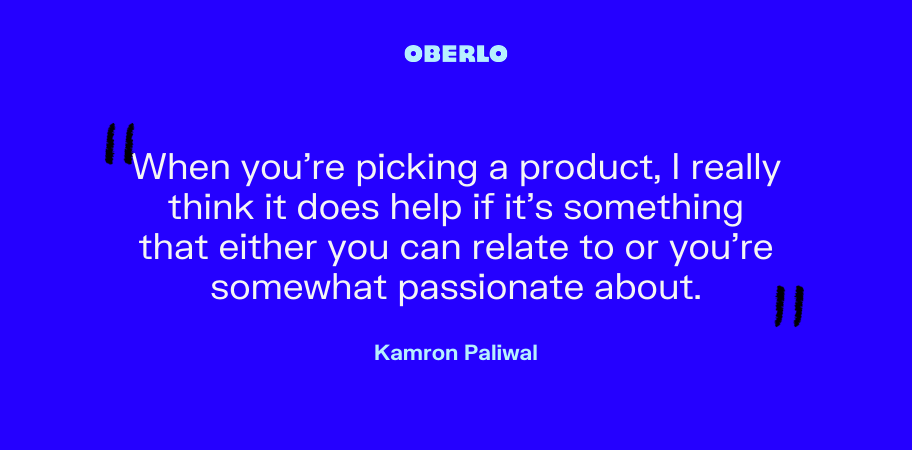
Aleisha: I agree, actually, because I think... We spend a lot of time within our team at Oberlo talking about finding the best products and what's hot and what's not, and we're all about content.
But it's so interesting because I know when I'm trolling Oberlo and I'm looking for... I'm in AliExpress looking for products, I'm always drawn... I like the Nordic, Scandinavian design scene. I like furniture and pretty hanging things on the wall. I always end up looking at that sort of stuff, just because I wanna buy it more so than selling it to someone else.
So I totally agree, if you have a passion or an interest in it, it does make it easier to then sit and look at 5,000 products and choose a niche or if you're producing a general store, at least what the theme of that's going to be.
That's my statement to you guys. So, tell me a little bit more about the AirPod business 'cause that's where you have made some money. Firstly, tell me, are you happy to talk about cash, like what you made in those couple of months when it really hit off for you guys?
The Role of Facebook Pixel
Kamron: Yeah, sure. In a second, I can go more in detail into numbers. I just wanna say starting off the bat, we talked about niche pages for a while. One of the things that this does is...
In the beginning, when we launched our store, we weren't even running any ads, we were just advertising our store and our website through the page.
And so in the first two to three weeks, this really provides a cushion because we were just driving organic traffic to our website and just getting sales simply from the niche page, simply from Instagram and on the explore page, just finding our page and wanting to go buy a product.
And so this really provided a cushion at the beginning where it's like... I still remember, we would sit there and we'd get one sale, two sales, one sale, three sales, and that'd be really great in a day because we were doing nothing. We were just sitting there waiting for the sales to come.
So this really provided us with a little bit of a starting budget to get into ads, and I'd say after about two weeks or so is when we really started Facebook ads.
Varun: Adding on to this, we actually... I think we had our Facebook Pixel open. So while we were getting these one, three, one, three sales, our Facebook Pixel was getting quite a bit of data during those two weeks.
And then once we started running Facebook ads, the scaling process was a lot easier since we had a lot more cold traffic in the beginning from the Instagram page. So our page grew even more with the Facebook ads, as well as the Facebook Pixel really helped.
Aleisha: So that's a good message, I suppose, is that even if you're just mucking around, always have that Facebook Pixel installed because you can collect data even when you're just... Well, not even, it's great when you're getting organic sales and you're not having to pay for anything, but that's such valuable information for later on down the track.
Kamron: Yeah, I'm really happy Varun brought that up. That's actually super important because Facebook starts... Your website… Facebook starts to get an idea of the type of people that are buying the product. And so from the get-go, that was something that was really crucial.
Aleisha: Remember that, everyone, it's so simple to install a Facebook Pixel, it takes like five minutes. We've got plenty of information at Oberlo.com, you just put "Facebook Pixel" into the search thing, it will... We've created literally tens of videos about this sort of information, so check it out because it's such wasted time if you don't do it initially, I suppose.
Hitting $30k in Revenue
Kamron: Yeah, for sure. But yeah, going back to what you were talking about earlier, you were talking about numbers and revenue. So in total, in the store, we ended up... By the time we closed the store, we had done $30,000 in revenue.
Aleisha: Wow.
Kamron: This was... In our last month, we were approaching about $10,000 in that last month of revenue. So you can see clearly it was just a big scale-up process. It wasn't necessarily super consistent from the beginning.
But going into more detail, this was a low ticket item. So we were getting the product for between $2.99 and $3.99 plus an additional $3.99 to $4 for shipping. So about $7 to $8. Yeah, about $7 to $8 or so in total for the product cost. And then...
This is our first get-go with Shopify. We played around with prices a lot and so I would say looking back, one of the things that I realized was we really did not leave a lot of room in our margins for ad costs.
So selling at $14.99 plus the shipping fee, we were only left, sometimes, with let's say between $6 and $10 for ad costs, which is really not that much.
It's much easier for low-ticket items. But yeah, those are some of the proportions in terms of what we were doing with numbers and how much we had to play around with ads. So when you think about that $30,000, and this applies to all ecommerce overall, revenue is a big number. For every store, revenue's always the first number that you see, but you really gotta think about...
For us, it was sort of a one-third, one-third, one-third breakdown of 33 percent product cost and then 33 percent ad cost, and then we were hopefully profiting between 20 to 30 percent in terms of each one that we sold.
Aleisha: I'm so glad that you said that because we get so many merchants that come in and say, "Hey, I made 200 grand," and then when you break it... And that's amazing, by the way, I'm not disparaging anyone from exploring and sharing the revenue. But it is really easy to get excited about big numbers.
But then when you do break it down and look at the outgoings as well, we have to be realistic in the consequences of advertising and that you have to pay for it. And also, you have to pay shipping if you're offering free shipping.
So I'm really glad that you're being transparent about that. And 30 grand, though, revenue, is still amazing, and you did it in such a short amount of time as well. So congratulations to you both. But also, well done for being honest about the difference between revenue and profit. So that's pretty good.
Tell me, then, about why the store shut and any lessons learned from the store because I think you've had some interesting experiences when it comes to the product, and also looking at brand names and sitting on the edge like that.
Shutting Down Because of COVID-19
Varun: So the store shut just because of coronavirus, which is a big topic. A lot of businesses were going bankrupt, and just to go a little bit back, during the business, it was around two and a half to three months we did the business.
The first month, we did $2,500 in revenue, the second month we did $12,000 in revenue, and then the last half month, it was actually 15 days, we did I think, $15,000 in revenue, and that was only in 15 days, and then we closed.
Aleisha: So you had a real build in those three months, it was a big, sharp build.
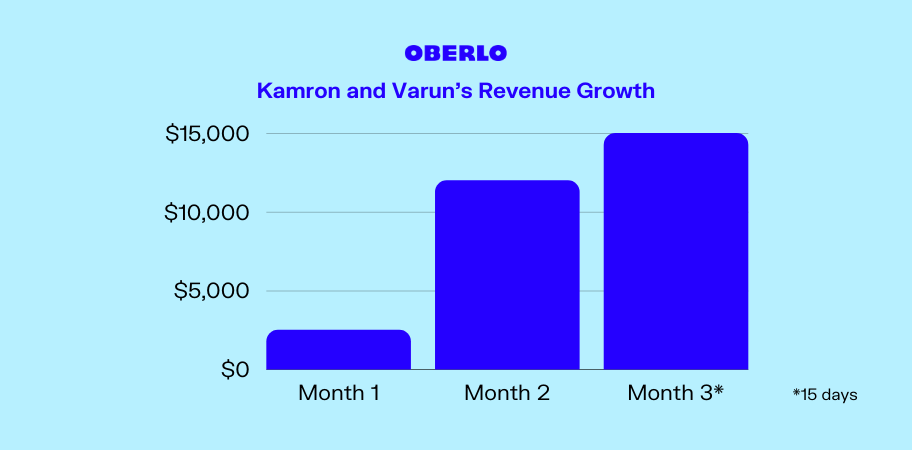
Kamron: Yeah, and I would say, like I said, from the beginning, we definitely had that cushion period. I think those numbers are exactly how it is, I would just say, I think we're discounting... That first month there, where we did...
When you start a store, don't expect to get more than a thousand, two thousand, five thousand in the first month.
We definitely had our month there, I think we started in November where we were definitely sub-$1,000. We were probably around $500 the first month, and then when we started running ads, that's when it really started to take off.
And then going back to your question about why we shut down, so Varun is exactly right. Basically, what ended up happening was... I'll add a quick detail. From the get-go, we wanted to utilize... Everyone prefers to use Shopify Payments straight off the bat when you open a store. There are a bunch of different payment processors out there, but just blank, nothing else, Shopify Payments is what people want to go with. And right off the bat, after about a week of using Shopify Payments, they let us know that we wouldn't be able to use Shopify Payments because, like you said, of the nature of the product we were selling.
So these AirPod cases, in order to appeal to more people... In order to be able to advertise these as sort of a "luxury accessory," we were using designs that were inspired by these luxury brands that a lot of people wear, and that are just highly coveted by a lot of people.
And so Shopify, they're not necessarily very strict, but at the same time they don't want to take on risk like that, and so we had to use PayPal from the get-go. And so, basically, like Varun said, what happened in the month of March or so, when we decided to scale down and eventually close the store, what ended up happening was that, a couple of things.
So first, our shipping times just skyrocketed right in that month, and we decided, "Okay, well, we can't really advertise fast shipping if we're not able to just do it."
The second thing was actually Facebook. Our Facebook ads manager... This happens to a lot of people, but we were just experiencing a lot of difficulties with getting disabled, getting re-enabled, and contacting Facebook. They have a lot of volume. There are a lot of people in this world who run ads on Facebook. And so for a smaller, you could say, higher-risk website and shop like ours, we were definitely experiencing a lot of issues.
And the third thing was PayPal just giving us difficulty with transferring funds, and accepting payments, and stuff like that. So a combination of those three, us unable to fulfill shipping times, or our suppliers skyrocketing our shipping prices, we weren't able to find good margins, and we decided to stop running ads because it just no longer became profitable.
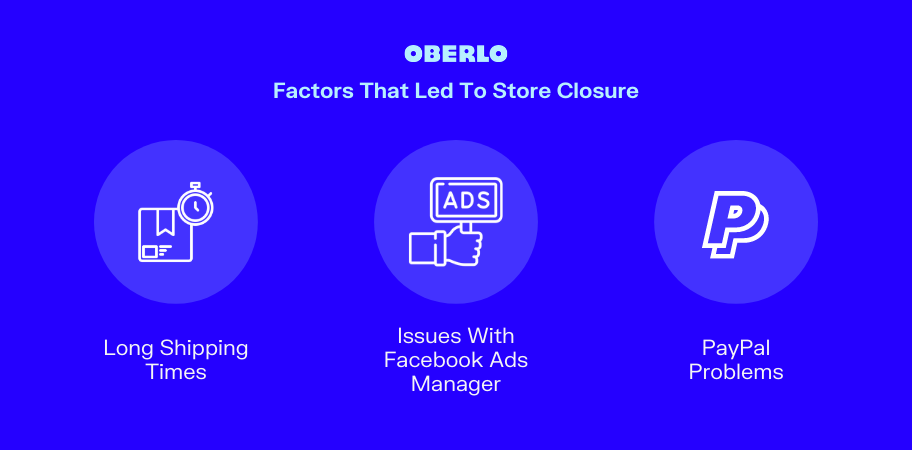
Lessons To Apply To Future Ventures
Aleisha: I think it's so amazing that you guys have done this so quickly, you've turned it around and you've learned so much, and I think that's such a valuable experience to then build another store or 50 more stores. What are the lessons that you can sort of bring to this experience, and what you're gonna bring into your next venture together?
Kamron: Yeah, so I definitely agree with the fact that it was a major learning experience. I mean our first just dipping our toes into the waters of Shopify. But overall, I'd say that there are a lot of lessons in terms of... There are a lot of things we did right, I'd say, like scaling slowly, figuring out the right audiences that really work, whether that's within Facebook advertising, or figuring out the right, basically, people to advertise this to.
I would say that, if you can, definitely use a preferred payment processor besides PayPal for your whole store. Shopify Payments is great. There are some others out there. Stripe had given us a ton of issues as well, but there's a bunch of payment gateways out there. I think that's very important just because you want to be consistently getting revenue and then transferring it to your bank so that you can go right back into ads.
Aleisha: Sure.
Kamron: Another thing is to really think about your margins. Our overall theory from the get-go was basically, "Alright, we're gonna undersell competition." First of all, we had a unique product, so there weren't many bigger stores out there. But we were like, "Alright, we're gonna try to sell as much as we can at the best price."
And it worked out for us, but it's not necessarily always the best strategy because you want to give yourself room.
You want to give yourself room both to profit and to give yourself enough room to really play around with ads. If you're breaking even for the first month, second month, that's great. You're really just giving your Facebook Pixel data, and you're really finding where the right audiences are within Facebook ads. So really give yourself that room to be able to spend $5, $10, $15 per purchase on ads.
Varun: I can add on to Kamron.
Aleisha: Please.
Varun: Okay, so basically, I think we should... Also, if you have the money to outsource your customer service because every day me and Kamron, during school, during lunch, we just get a bunch of emails and it's really hard to respond when every email is just like, "When is my order gonna arrive? When is my order gonna arrive? What's the tracking number? When's my order gonna arrive?"
And then you have to keep answering emails, emails. I think you should outsource that. You can use Upwork, or hire someone.
And then also, another tip I have is to put customers first. I feel like if you just care about money only, your customers will not like... If you put your money first, then you'll just put longer shipping times, you'll try to get as much margin as possible. But I feel like if you put your customers first, you'll get bigger margins because of more volume of orders, because they'll like your company more.
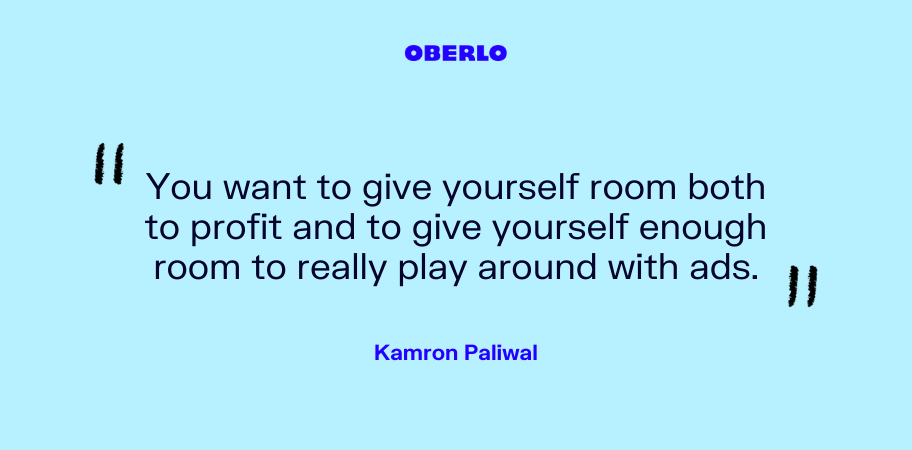
Kamron: I was just gonna say one thing. I was gonna say, even if you just think about exactly what Varun just said, if you have a customer who has just an amazing shopping experience, there's just a much higher chance they're gonna come back and purchase from you again.
And so really just think about that in terms of the first time someone buys from you is not necessarily the most profitable experience that they're gonna give you. It's not necessarily the most business you're gonna do with that customer. You really wanna give them an experience where they want to come and shop again.
Your storefront can look nice, and your product could be great, but if your shipping time is 30 days, or you don't respond to their emails, they're never gonna wanna buy again.
But if they get their product fast, you give them a discount code, they're pretty likely to actually use that in the future.
Aleisha: Yeah, totally, and I think, yeah, the return sale is just so important. I think a lot of people ignore that idea and they just want to do a bit of a "smash and grab.” But then also you're much better having positivity and making it easier for you in the future with people just popping back and giving you more money without having to do as much work. It's fantastic.
Tell me a little bit more about what you talked about being at school and doing customer service emails at lunchtime. What do your friends think about this? Were you like, "Hey, I can't go and talk to you. I can't hang out at lunchtime. We need to respond to 100 emails," or did you keep it under your hat?
Varun: During lunch I just was on my phone the whole time, just eating lunch, just responding to emails. That's what I did, and I don't know... Kamron was also responding to emails as well. We also used... We also emailed other companies for brand recognition.
Also, with our Instagram page, we got so much traction, I think at the end of Pod Hustlers we got 10,000 to 20,000 likes per picture.
It wasn't like we were reaching out to influencers, they were actually reaching out to us.
So it was like... Yeah. So we just shipped out the product and then they would just post about it, and we didn't have to pay them, but some people we had to pay 'cause we reached out to them.
Working With Influencers
Aleisha: Sure. And do you recommend that working with influencers and getting that sort of side of the business happening? So I think a lot of people find it quite overwhelming approaching people and making deals like that.
Is this something that you think it's worth your time and money, or is it better to go down the niche? Like you said, start a niche Instagram page or just pay for advertising through one of those pages.
Varun: I would pay just influencers like celebrities, and you can use their post and their video or whatever as social proof. And you can make that into a Facebook ad creative. And I feel like that would be way better and higher conversion.
Kamron: To answer your question, it really depends. It takes a few months to develop this, but you really have to have an eye in terms of when you look at a celebrity or an influencer's page, you really have to see, "Oh, how high is their engagement and how many likes are they getting per photo?"
And you really have to get them to be sort of transparent with you 'cause a lot of these influencers, this is a really significant revenue source for them. And so for them, it's really easy. What do they have to do? Post a video, post a picture and you just pay them, right?
But to really find the best ones, you have to reach out, get all the stats, and then really compare, say, "Alright, I'm gonna spend $300. How many sales do I need to get in order to make my $300 back and then profit?"
And so that number right there is usually really important because if you have to make ten sales, and this is just for example, but they're only getting 15 views, well, that wouldn't make sense. But if you have to make 100 sales and they get 750,000, 800,000 views on, let's say, a feed video, that's a much better proportion right there.
And those numbers are extremely unrealistic. But just the concept of thinking about that overall is pretty important when you're deciding who you wanna do ads with.
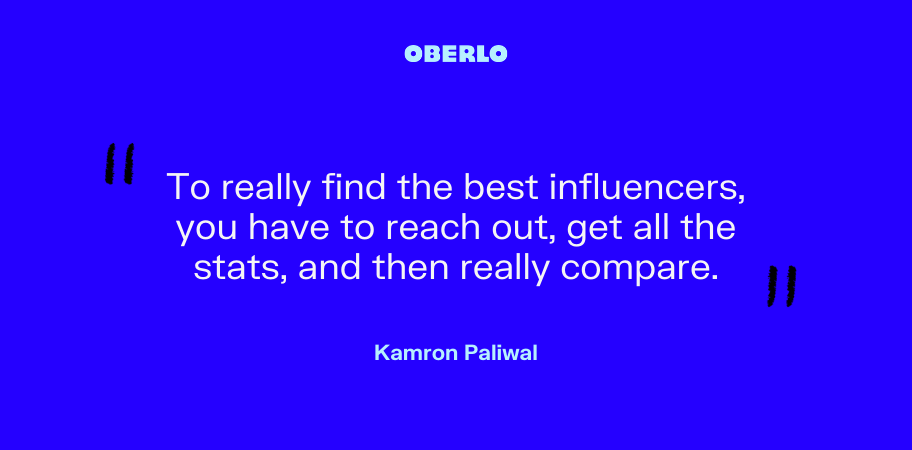
Aleisha: Yeah, totally. Engagement rate is huge, and I think sometimes I go into different accounts and look at them going... If they've got 100,000 followers but they're only getting 15 likes per post, you can really smell something, a rat, when you're looking at those sorts of pages.
And do you think it's also good to check if the... There are lots of different websites that you can go to and check if it's genuine engagement or not. Do you think it's worth doing that and just doing a little bit more research, going a bit heavier with that?
Kamron: Yeah, it definitely is. And you can go to different websites just to see their engagement rate. And you can also just, like I said, look on their page, depending on how many likes they get compared to their followers.
I would also say that try to avoid influencers who "spam" their feed or their stories with a bunch of other ads.
Because if you're able to find an influencer who has a really strong following and they don't really promote products that often, or at least less compared to others, their fans and their followers are much more likely to be like, "Oh wow, they've taken the time out of their day to really promote this product."
And they know that they're getting paid to do it, but at the same time, if the influencer is more selective about which ads they take on and which products they decide to advertise, you're much more likely to get a higher conversion rate in terms of how many sales you get based on those posts.
Looking Ahead
Aleisha: So tell me now, what's the next step for you guys? You're both still in school?
Varun: Yeah, I'm in 11th grade and Kamron is in 12th grade.
Aleisha: So I'm assuming finishing school is a big thing. And are you gonna start businesses together or is this it? What are the plans?
Kamron: I think that... So yeah, we're both in school right now. It's just I'm applying to college, Varun is in his junior year. So high school is coming to an end for me, and then it'll be him next year and we'll be moving on to college.
I think that through our experience, we were basically able to just build on each other's skills super well.
And I think that we both have each other as not even just... Not just a contact, but as someone who... We both know where we have... If I have a question about something in the space, I'll definitely come to him for it, and I think it's likewise, him for me. And so I think that if we decide ever to...
Right now, I'm not actually running any Shopify stores. I ran a couple throughout the quarantine, but right now I just have my mind on other things and I've been focused on new projects. But I think that in the future, if we ever decide that we need, as I said, anything related to ecommerce or we decide to do a project again, I think it's pretty likely that we'll probably end up working on something again in the future when we both have more time on our hands and we just have...
As I said, he came to me with this idea, I think that something that's really likely to just happen again in the future. What about you, Varun?
Varun: So yeah, I'm actually starting a new business. I haven't started it yet, but it is in the ecomm space. It is in the vitamin business, and it's actually a sleep gummy. And it's a sleep gummy bear, to be exact, and I actually put... About two weeks ago I put a pretty big, for me, as an 11th grader, it's a pretty big deposit of $5,000 for some stuff.
And yeah, I'm gonna be... I'll see how it goes, but I'm shipping all the stock to my garage, and I'm gonna see how much I can sell. If it does well, I'm gonna outsource it to a 3PL company or maybe hire some people to do it for me in a little warehouse thing, maybe scale it up a bit, but... Yeah, that's my plan for now, for this 11th-grade year.
Aleisha: That's so impressive. I sound like your mom going, "I'm so proud of you both," but it's just great to meet people that are really motivated and also I think the fact that you are both moving on and doing your own things but coming back together as friends and business partners is just impressive.
So thank you both so much for sharing and being so transparent, but also really giving a bunch of information that I know our listeners will find helpful and especially exploring the niche pages, but also being aware of the highs and lows of running an ecommerce business. 'Cause there's a lot of information out there that just promises quick Lamborghini success and that's not always the case.
Varun and Kamron, thank you so much for your time, and thanks for listening to the show and getting in touch.
Kamron: Thank you so much for having us, and I hope that whatever we said is valuable to anyone who listens and... Yeah.
Varun: Thank you so much.
Aleisha: No doubt.